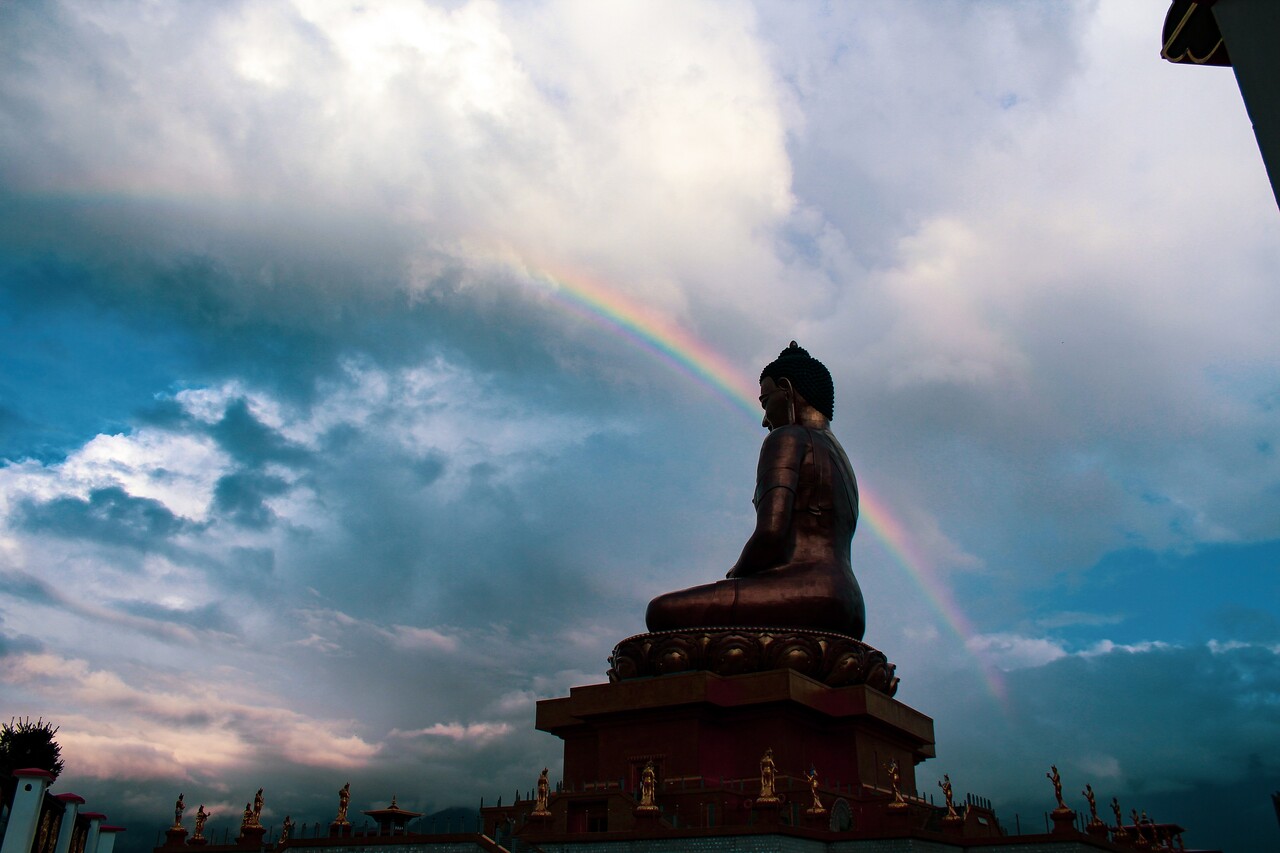What is nirvana?

Silhouette of a Buddha statue beneath a rainbow. | Source: Unsplash
Nirvana is a Sanskrit word for the goal of the Buddhist path: enlightenment or awakening. In Pali, the language of some of the earliest Buddhist texts, the word is nibbana; in both languages it means literally “extinction” (like a lamp or flame) or “cessation.” It refers to the extinction of greed, ill will, and delusion in the mind, the three poisons that perpetuate suffering. Nirvana is what the Buddha achieved on the night of his enlightenment: he became completely free from the three poisons. Everything he taught for the rest of his life was aimed at helping others to arrive at that same freedom.
That’s the basic idea, but there are of course many nuanced interpretations. In the Theravada tradition, for instance, nibbana is the way out of the endless cycle of rebirth and death known as samsara; it is a state that exists beyond space and time, impossible to describe. But a person who has attained nirvana is completely out of the woods of suffering and stress.
In Zen, Tibetan Buddhism, and other types of Mahayana Buddhism, the state of nirvana is synonymous with becoming a buddha, or realizing one’s innate buddhahood or buddhanature. In some schools, it’s believed that everyone’s basic nature is inherently enlightened, but since it is cloaked in ignorance—like clouds in front of a brilliant sky—we don’t recognize it. From this perspective, freedom from suffering and getting out of the round of birth and death aren’t the only goal: once you become a buddha, you can stay on hand to help until all sentient beings are freed from samsara.

Tricycle is more than a magazine
Gain access to the best in sprititual film, our growing collection of e-books, and monthly talks, plus our 25-year archive
Subscribe now